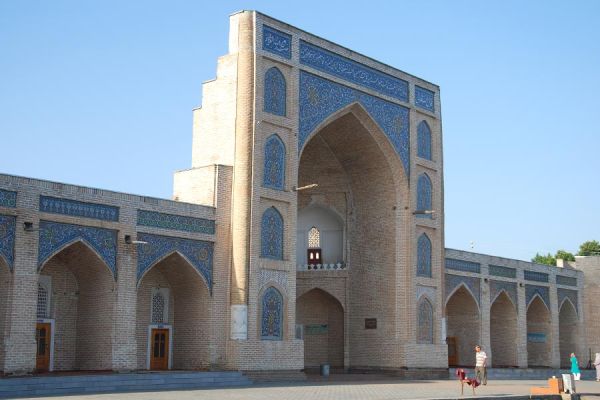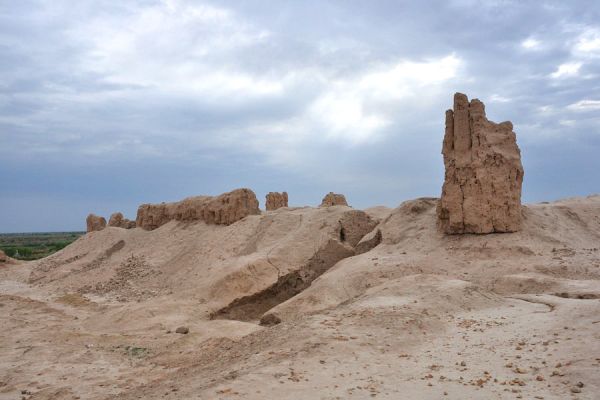Narbutabiya Madrasah
In the 19th century, according to eyewitnesses, there were forty madrasahs in Kokand, the highest Muslim educational institutions. Unfortunately, only a few of them have survived to this day, including the largest madrasa in the city, Narbutabiya. It was founded in the middle of the XVIII century on Chorsu Square, and construction was completed in 1799. It was at this time that the Kokand Khan won a number of victories over the Bukhara ruler and captured many prisoners, including artisans, and among them the Bukhara architect Muhammad Salih Usto Kasym. It so happened that Bukhara craftsmen unwittingly took part in the construction of the madrasah along with Kokand craftsmen.
The blank walls of the side facades of this one-story building had a length of more than seventy meters. The main entrance, oriented to the north, was highlighted by a high peshtak, which gave the building its monumentality and even grandeur. All four corners of the madrasah were rounded off by round guldast ladies with lanterns. The layout of the Narbutabiya madrasah vividly resembles similar monuments in Bukhara. A domed mosque has been built to the left of the main entrance. The interior of the mosque was illuminated through twelve lancet windows cut into a rather tall cylindrical drum. To the right was a training room – darshona. The rectangular courtyard was surrounded by twenty-four hujra cells, where madrasah students lived, as well as utility and utility rooms. Directly opposite the main entrance was a deep fountain for summer classes.
Perhaps the most remarkable thing about the Narbutabiya madrasah is its almost complete lack of decoration, which, however, creates an unforgettable impression of asceticism and the severity of its architectural appearance. The brickwork is exposed, the interiors glow with the whiteness of gancha plaster. Only the front doors are decorated with carved ornaments combining geometric elements with floral motifs. A modest stalactite cornice and a mihrab niche decorated with a star pattern make the mosque room only slightly more elegant than the darshan.
Nowadays, the Narbutabiya madrasah has been handed over to believers again, and 80 students from all cities of the Ferghana region study the Koran, Hadith and Arabic there.















